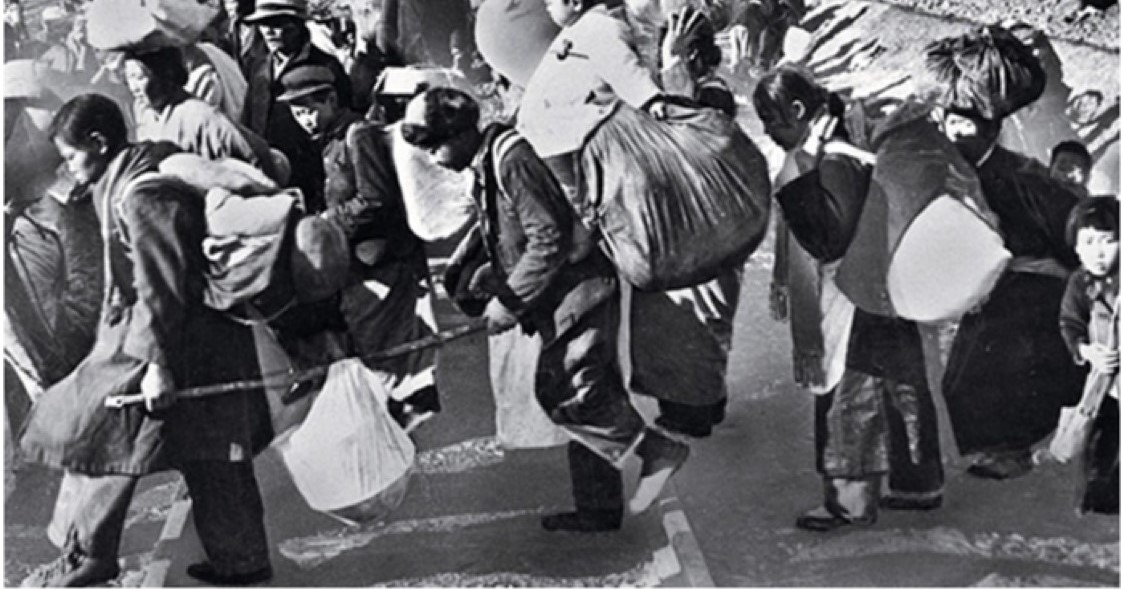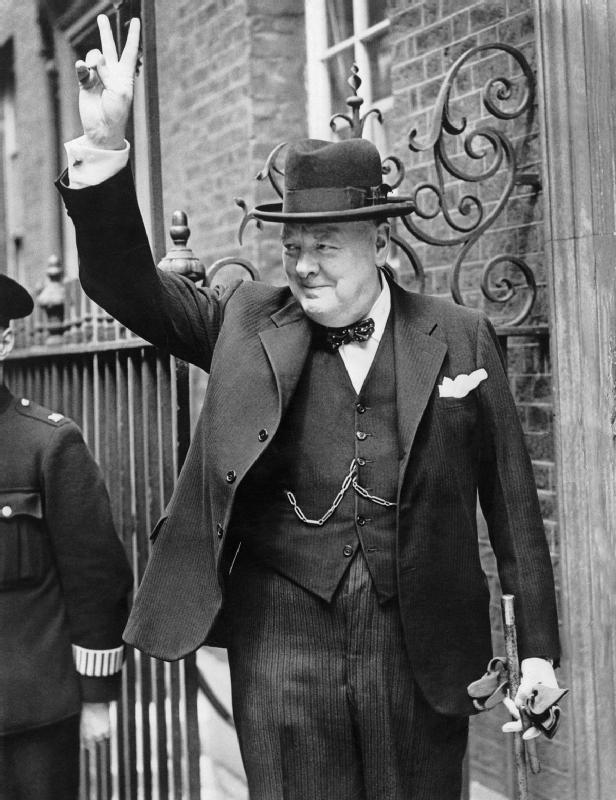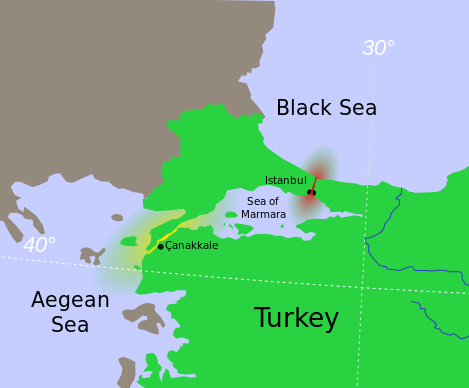
The Cold War
The Cold War
In February 1945, British Prime Minister Winston Churchill expressed his belief that world peace was nearer the grasp of statesmen than at any time in history. “It would be a great tragedy,” he said, “if they, through inertia or carelessness, let it slip from their grasp. History would never forgive them if it did.”
Peace did slip through their grasp. World War II was followed by a Cold War that pitted the United States and its allies against the Soviet Union and its supporters. It was called a Cold War, but it would flare into violence in Korea and Vietnam and in many smaller conflicts. The period from 1946 to 1991 was punctuated by a series of East-West confrontations over Germany, Poland, Greece, Czechoslovakia, China, Korea, Vietnam, Cuba, and many other hot spots.
The Origins of the Cold War
In March 1946, Winston Churchill announced that “an iron curtain has descended across” Europe. On one side was the Communist bloc. On the other side, were non-Communist nations aligned with the United States.

One source of conflict between the United States and the Soviet Union was the fate of Eastern Europe. The United States was committed to free and democratic elections in Eastern Europe, while the Soviet Union wanted a buffer zone of friendly countries in Eastern Europe to protect it from future attacks from the west. Twice in the first half of the twentieth century, Russia had been attacked along its western front and was eager to prevent a recurrence.
Even before World War II ended, the Soviet Union annexed the Baltic states of Estonia, Latvia, and Lithuania, and parts of Czechoslovakia, Finland, Poland, and Romania. Albania established a Communist government in 1944, and Yugoslavia formed one in 1945. In 1946, the Soviet Union organized Communist governments in Bulgaria and Romania, and in Hungary and Poland in 1947. Communists took over Czechoslovakia in a coup d’état in 1948.
Communist expansion into eastern and central Europe provoked alarm in Washington, D.C., where federal officials feared that the Soviet Union was engaged in a campaign of world conquest.
Another source of East-West tension was control of nuclear weapons. In 1946, the Soviet Union rejected a U.S. proposal for an international agency to control nuclear energy production and research. The Soviets were convinced that the United States was trying to preserve its monopoly on nuclear weapons. The Soviet Union was eager to establish its own nuclear deterrent.
A third source of conflict was post-war economic development assistance. The United States refused a Soviet request for massive reconstruction loans. In response, the Soviets called for substantial reparations from Germany.
These developments combined to produce an atmosphere of suspicion. The United States responded by taking a series of steps to contain Communist expansion.
The Truman Doctrine
A presidential message to Congress in March 1947 proposed economic and military aid to countries threatened by a Communist takeover.
In February 1947, Britain informed the United States that it could no longer afford to provide aid to Greece and Turkey. The situation seemed urgent. The Greek monarchy was threatened by guerrilla warfare, and the Soviet Union was seeking to control the Dardenelles in Turkey, a water route to the Mediterranean. The U.S. government feared that the loss of Greece and Turkey to Communism would open Western Europe and Africa to Soviet influence. The U.S government also worried that if the Soviet Union gained control over the Eastern Mediterranean, it could stop the flow of Middle Eastern oil.

President Truman responded decisively. He asked Congress for $400 million in economic and military aid for Greece and Turkey. This was an unprecedented amount of foreign aid during peacetime. He also declared that it was the policy of the United States “to support free peoples who are resisting attempted subjugation by armed minorities or by outside pressures.”
Truman’s overarching message described two ways of life that were engaged in a life-or-death struggle, one free and the other totalitarian. The United States would help free people to maintain their free institutions and their territorial integrity against movements that sought to impose totalitarian regimes.
The Truman Doctrine committed the United States to providing aid to countries resisting Communist aggression or subversion and provided the first step toward what would become known as the Containment Policy.
The Containment Policy
An article in the July 1947 issue of Foreign Affairs magazine, signed X, proposed that the West adopt a policy of “containment” toward the Soviet Union. The article’s author, George Kennan, who set up the U.S. embassy in Moscow in 1943, called on the United States to take steps to prevent Soviet expansion. He was convinced that if the Soviet Union failed to expand, its social system would eventually break down.
The Containment Policy would adopt two approaches. One approach was military; the other was economic. In 1947, U.S. Secretary of State George C. Marshall proposed a program to funnel American economic aid to Europe. Faced with a rapid growth in the size of Communist parties, especially in France and Italy, the U.S. proposed a program of direct economic aid to rebuild Europe’s war ravaged economies and thereby diminish the popular discontent that was leading growing numbers of Europeans to support Communist parties.
The Marshall Plan
In June 1947, George C. Marshall proposed to give unprecedented amounts of financial aid to European countries. He called on Europeans to collectively agree on what kind of assistance they needed. Even the Soviet Union was invited to participate in the planning.

The Soviet delegation abruptly quit the summit in Paris to discuss the Marshall offer. When two Soviet satellites—Czechoslovakia and Poland—indicated that they wanted to take part in the Marshall Plan , the Soviet Union said no. The Soviet refusal to participate made it easier to secure congressional passage for the plan. When the Czechoslovakian government was overthrown in a Communist coup, congressional passage was assured.
The Marshall Plan committed more than ten percent of the federal budget and almost three percent of the United States’ gross national product to rebuilding Western Europe. Over the next forty months, Congress authorized $12.5 billion in aid to restore Western Europe’s economic health and to halt the spread of Communism. Marshall’s plan actually cost the United States very little, since it was largely paid for by European purchases of American coal, agricultural crops, and machinery.
The Fate of Germany
In March and April 1947, the United States, British, French, and Soviet officials met in Moscow to discuss the future of Germany. The participants were unable to agree about whether to end the occupation of Germany or to reunify the country. The conference’s failure led the Western Allies to unify their German occupation zones in June 1948 and to establish a new country, West Germany.
Berlin Blockade
Outraged by Western plans to create an independent West Germany, Soviet forces imposed a blockade cutting off rail, highway, and water traffic between West Germany and West Berlin. A day later, an airlift began flying in food and supplies for West Berlin’s two million residents. By September, the airlift was carrying 4,500 tons of supplies a day. Over the next eleven months, 277,000 flights brought in 2.5 million tons of supplies until the Soviet Union lifted the blockade.
At any time, the Soviet Union could have stopped the blockade by shooting down the airplanes ferrying provisions to West Berlin. Clearly, the Soviet Union was testing the will of the United States and its western allies.
NATO
In April 1949, a month before the Soviet Union lifted the Berlin Blockade, the United States, Canada, Iceland and nine European nations formed NATO (the North Atlantic Treaty Organization), a military alliance. Member states pledged mutual assistance against an armed attack and cooperation in military training and strategic planning.
The U.S. stationed troops in Western Europe, assuring its Allies that it would use its nuclear deterrent to protect Western Europeans against a Soviet attack.
NATO’s first Secretary General, Lord Hastings Lionel Ismay, explained the alliance’s purpose in a striking phrase. It was, he said, created to “keep the Soviet Union out, the Americans in, and the Germans down.”
The admission of West Germany into NATO in 1955 led the Soviet Union and its Eastern European satellites to form a competing military alliance called the Warsaw Pact.
The Chinese Revolution
In October 1949, Chinese Communists under Mao Zedong proclaimed the birth of the People’s Republic of China. China’s previous leader, Chiang Kai-shek, and Chinese Nationalists were forced to flee to Formosa (now Taiwan). The “fall” of China shocked many Americans and would contribute to the myth that American government officials were somehow responsible for the country’s loss to the Communists.
Soviet Atomic Bomb
In September 1949, President Truman announced that the Soviet Union had successfully detonated an atomic bomb. Four months later, President Truman advised the Atomic Energy Commission to proceed with the development of a hydrogen bomb.
U.S. government officials had predicted that it would take the Soviet Union as long as a decade to develop an atomic bomb. The speed with which the Soviets produced a bomb led to charges that development of the device was a product of Soviet espionage.
The United States set off its first hydrogen bomb in 1953, and the Soviet Union tested its first hydrogen bomb in 1955.